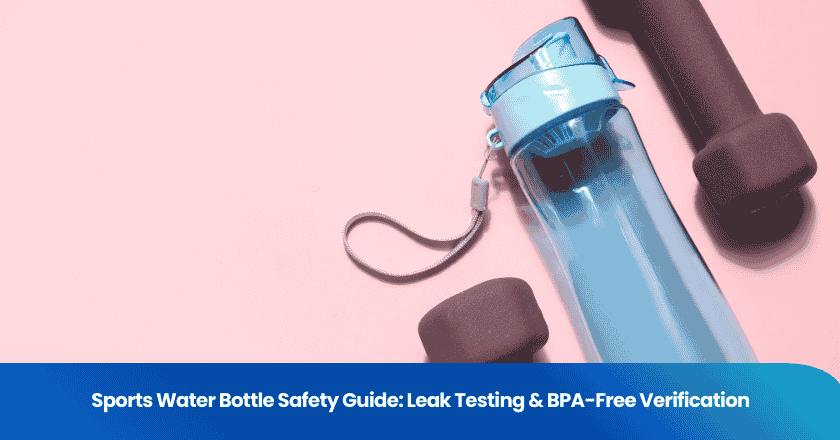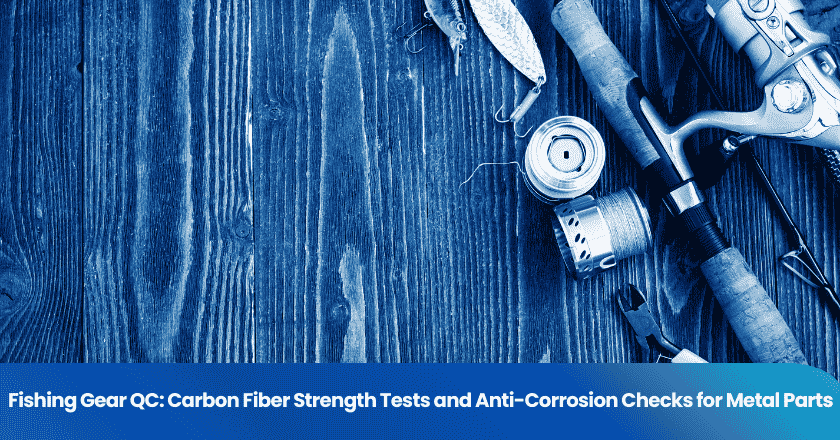
Quality control in apparel industry ensures every garment meets strict standards before reaching customers. Companies that prioritize quality control protect their reputations and build lasting trust with buyers. For example, a 2022 survey showed that nearly 60% of customers returned clothing due to defects or poor fit. This process leads to fewer returns, higher satisfaction, and stronger business growth. Both businesses and consumers benefit from consistent quality and reliable products.
What Is Quality Control in Apparel Industry
Definition and Role
Quality control in apparelindustry refers to a systematic process that ensures every garment meets specific standards for quality, fit, and durability. This process involves monitoring and evaluating each stage of production, from raw materials to finished products. The main goal centers on delivering clothing that matches customer expectations and industry requirements.
Quality control teams set clear benchmarks for fabric strength, color consistency, stitching accuracy, and overall appearance. They use these benchmarks to identify defects early and prevent faulty products from reaching the market. By doing so, they help companies avoid costly returns and maintain a positive reputation.
Note: Quality control acts as a safeguard, protecting both the manufacturer and the consumer from issues related to poor workmanship or substandard materials.
Application in Manufacturing
Manufacturers apply quality control in apparel industry through a series of checks and tests during production. These steps include:
• Inspecting raw materials for flaws or inconsistencies.
• Monitoring sewing and assembly lines for proper techniques.
• Testing finished garments for fit, colorfastness, and durability.
• Reviewing packaging to ensure correct labeling and presentation.
Production teams often use checklists and quality control charts to track progress and spot trends. Some factories implement random sampling, where inspectors select garments at different stages for detailed examination. This approach helps catch problems before they escalate.
A well-structured quality control system reduces waste and increases efficiency. It also supports compliance with safety regulations and industry standards. As a result, manufacturers can deliver reliable products that satisfy customers and meet market demands.
Why Quality Control Matters
Product Consistency
Product consistency stands as a cornerstone in the apparel sector. Customers expect every garment to match the promised size, color, and finish. When manufacturers implement strict quality control in apparel industry, they deliver products that meet these expectations every time. Consistent quality reduces the risk of defects and ensures that each item aligns with the brand’s standards.
Note: Consistency in apparel builds customer trust and encourages repeat purchases.
A consistent product line also minimizes the number of returns. Fewer returns mean less disruption in the supply chain and improved customer satisfaction. Teams that focus on quality control catch issues early, preventing defective items from reaching the market.
Cost and Waste Reduction
Effective quality control leads to significant cost savings. By identifying defects during production, manufacturers avoid the expense of reworking or discarding finished garments. This proactive approach reduces material waste and labor costs.
• Early detection of flaws saves resources.
• Lower defect rates decrease the need for costly recalls.
• Streamlined processes improve overall efficiency.
Sustainability also benefits from reduced waste. Factories that minimize discarded materials contribute less to landfill and conserve valuable resources. Many companies now use AI-powered technologies to spot defects at early stages. These systems analyze fabric and stitching in real time, allowing teams to address problems before they escalate.
| Benefit | Impact on Business |
|---|---|
| Lower production costs | Higher profit margins |
| Less material waste | Improved sustainability |
| Fewer returns | Better customer loyalty |
Compliance and Safety
Compliance with industry standards and safety regulations remains essential in apparel manufacturing. Quality control teams monitor every step to ensure garments meet legal requirements for labeling, flammability, and chemical use. Failure to comply can result in fines, product recalls, or even legal action.
Tip: Regular audits and inspections help maintain compliance and protect both workers and consumers.
Safety also extends to the end user. Properly tested garments reduce the risk of allergic reactions or injuries. By prioritizing compliance and safety, manufacturers demonstrate responsibility and build a positive reputation in the market.
Quality Control Processes
Inspections
Inspections form the backbone of quality control in apparel industry. Inspectors examine garments at different stages of production. They check for defects such as loose threads, uneven stitching, or incorrect sizing. Teams often use visual checks and measurement tools to verify that each item meets established standards. Inspections can occur before, during, and after production. Early inspections help catch problems before they affect large batches. Final inspections ensure only approved products reach customers.
Tip: Regular inspections reduce the risk of defective items entering the market.
Testing Methods
Testing methods provide objective data about garment performance. Technicians use specialized equipment to test fabric strength, colorfastness, and shrinkage. For example, they might stretch fabric samples to measure durability or wash garments to check for color fading. Some factories use chemical tests to ensure materials are safe for skin contact. These tests confirm that products meet safety and quality requirements.
• Common testing methods include:
◦ Tensile strength testing
◦ Colorfastness testing
◦ Dimensional stability testing
◦ Chemical safety analysis
Testing helps manufacturers maintain consistent product quality and comply with regulations.
Audits
Audits offer a comprehensive review of the entire production process. Auditors evaluate factory procedures, employee training, and record-keeping. They look for gaps in quality control systems and suggest improvements. Audits may be scheduled or unannounced. Regular audits encourage accountability and continuous improvement.
| Audit Focus Area | Purpose |
|---|---|
| Process evaluation | Identify weaknesses |
| Documentation review | Ensure accurate records |
| Staff interviews | Assess training effectiveness |
Audits play a key role in maintaining high standards and building trust with customers.
Risks of Poor Quality Control
Recalls and Losses
Manufacturers face significant financial risks when they neglect proper quality control. Defective garments often lead to large-scale product recalls. These recalls require companies to pull items from stores, manage logistics, and handle customer complaints. The costs quickly add up. Companies may lose revenue from unsold inventory and pay extra for shipping and disposal. In some cases, they must offer refunds or replacements, which further increases expenses.
Note: Recalls damage a company’s reputation and disrupt supply chains, making recovery difficult.
A single recall can impact future sales. Retailers may hesitate to stock products from manufacturers with a history of quality issues.
Customer Trust Issues
Customers expect reliable and safe clothing. When they receive defective or poorly made garments, trust erodes. Negative experiences often lead to bad reviews and social media complaints. Word spreads quickly, and potential buyers may choose competitors instead.
• Loss of trust results in:
◦ Decreased repeat purchases
◦ Lower customer loyalty
◦ Increased return rates
A damaged reputation takes time to rebuild. Companies must invest more in marketing and customer service to regain lost confidence.
Legal Problems
Poor quality control exposes companies to legal risks. Regulatory bodies enforce strict standards for safety, labeling, and chemical use in apparel. Failure to comply can result in fines, lawsuits, or product bans. Legal disputes drain resources and distract management from core business activities.
| Legal Risk | Potential Consequence |
|---|---|
| Non-compliance | Fines and penalties |
| Safety violations | Lawsuits and recalls |
| Mislabeling | Product bans and warnings |
Tip: Regular audits and adherence to regulations help prevent costly legal issues.
Companies that prioritize quality control in apparel industry reduce the likelihood of facing these serious challenges.
Best Practices for Quality Control in Apparel Industry
Setting Standards
Clear standards form the foundation of any effective quality control system. Teams must define measurable criteria for fabric quality, stitching, sizing, and finishing. Written guidelines help every worker understand what is acceptable and what is not. Visual aids, such as sample boards or checklists, make these standards easy to follow on the production floor.
Tip: Regularly review and update standards to reflect new materials, technologies, or customer preferences.
A well-documented set of standards ensures consistency across all production batches. This approach reduces confusion and helps prevent errors before they occur.
Employee Training
Skilled employees play a critical role in maintaining quality. Training programs should cover inspection techniques, equipment use, and problem-solving skills. New hires need thorough onboarding, while experienced staff benefit from refresher courses.
• Key elements of effective training:
◦ Hands-on demonstrations
◦ Clear instructions for each task
◦ Ongoing feedback and support
When employees understand the importance of quality control in apparel industry, they become more proactive in identifying and addressing issues. Well-trained teams contribute to fewer defects and higher customer satisfaction.
Continuous Improvement
Continuous improvement keeps quality control systems effective over time. Teams should collect data from inspections, audits, and customer feedback. Regular meetings help identify trends and areas for enhancement.
| Improvement Method | Benefit |
|---|---|
| Root cause analysis | Fewer repeat defects |
| Process updates | Increased efficiency |
| Technology adoption | Early defect detection |
Note: Encourage open communication so all employees can suggest improvements.
By fostering a culture of learning and adaptation, companies stay competitive and deliver reliable products to the market.
Quality control remains essential for success in the apparel sector. Strong systems help companies deliver consistent products, build customer loyalty, and protect brand reputation. Teams that invest in quality control see fewer defects and higher satisfaction rates. Industry professionals should review current practices and seek ways to improve. Regular updates and training keep standards high and support long-term growth.
FAQ
What are the main types of quality control in apparel manufacturing?
Quality control in apparel includes in-line inspections, final product checks, and laboratory testing. Each type targets different production stages to ensure garments meet required standards.
How does quality control reduce costs for apparel companies?
Early defect detection prevents expensive rework and waste. Companies save money by minimizing returns, recalls, and material loss. Efficient quality control leads to higher profit margins.
Grow your business with TradeAider Service
Click the button below to directly enter the TradeAider Service System. The simple steps from booking and payment to receiving reports are easy to operate.



